Have you ever been in a sad situation involving chords? There you are, wanting to play a song, then you download the chord notation from the Internet. Great (that’s what you think). Then at some point in the song, a chord appears that you have never seen before. Gosh, what is this chord?
You run to a chord dictionary, type the chord in question, but the dictionary does not contain any chords with that name. It’s the end, not even the chord dictionary knows!
In reality, you may think that the only way to know how to form a chord is to memorize it. If you don’t have a huge database in your head, you’ll never know many chords. Well, you may be glad to know this is nonsense.
Running after a chord dictionary is a beginner’s practice. Now you will learn not to depend on it anymore. Even more than that; you will learn how to be better than a chord dictionary!
Like everything in music, there is a logical rule for defining the name of each chord. If you know the rule, you can form and name any chord on your instrument. Great, let’s learn how to do it! You will see a “strange” chord in the chord notation and know how to form it without outside help. And there’s more; a friend of yours will form any chord or combination of notes on your instrument and you will tell him which chord he is making. No matter what he does, he can spend the whole day making up chords, you will always know the name of all of them.
We will start using the keyboard as an example, since it is easier to visualize and form chords on that instrument, but these concepts apply to any other instrument as well. Then, we will show you the same concepts applied to the guitar, as there are some extra details that are important to consider in this instrument.
So here we go: You have already learned how to make major, minor and seventh chords. But it maybe it’s not very clear how to form these chords on your instrument. Well, it’s very simple, you just need to play all the notes that make up each chord we study!
For example: to form a major chord, you must play the 1st degree, the 3rd major degree and the perfect 5th from the chosen note. Let’s form the C major chord: I must play the C, E and G notes:
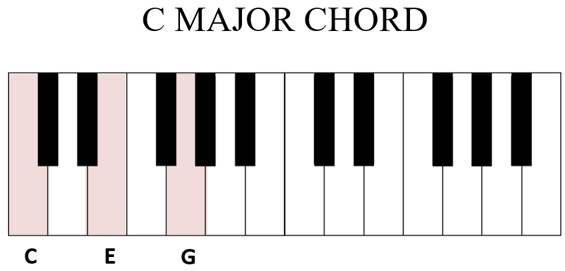
OK. This chord was easy, but if I want to form, for example, the F# major chord? Just follow the same rule: the 1st degree is F# major, the 3rd degree is A# and the perfect fifth is C#. The chord will look like this:
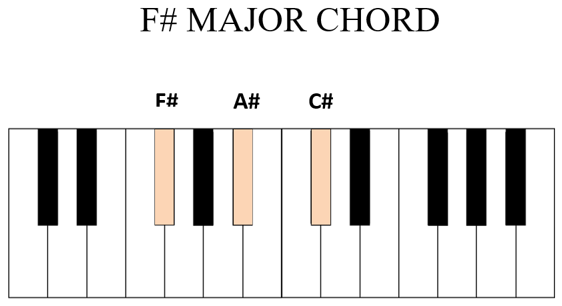
Note: the chords can be played in any octave of the instrument, because the notes are the same, what changes is the pitch of the sound that may be lower or higher.
Before moving on, it is worth noting that we can play the same chord in different ways. These are called “inversions“. In practice, the only thing that changes is the order of the notes.
The first position a chord is called a fundamental position. It starts with the note that gives the origin to the name of the chord. This is the example we have already seen (the chord is formed in the following order: 1st degree, 3rd degree and 5th degree).
The 1st inversion occurs when we start the chord by the 3rd degree. In the case of C major, the major third is E, so we are left with:
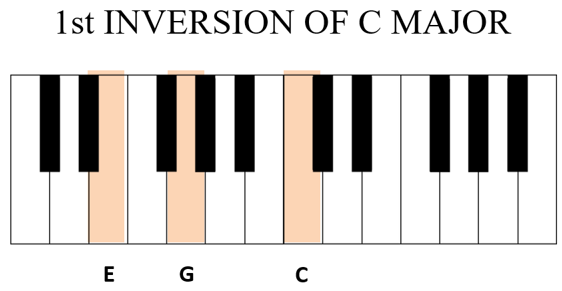
The 2nd inversion occurs when we start the chord by the fifth degree. In the case of C major, the fifth is the G note, so we get:
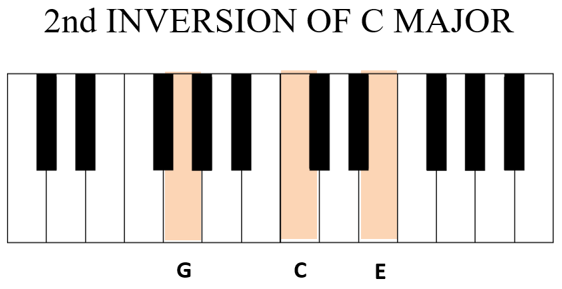
The reason inversions exist, as well as tips on how to use them, will be covered in another chapters here on the website. For now we are focused only on the formation of the chords and their nomenclatures.
Well, we’ve already seen how to build a major chord in practice. To form a minor chord, just play the 1st, minor 3rd and perfect 5th degrees. Then, to form the C minor chord (Cm) we will play, C (1st), E flat (minor 3rd) and G (perfect 5th).
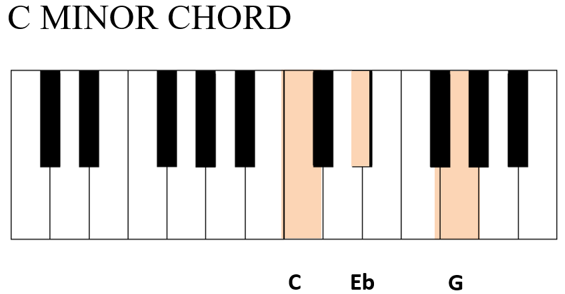
Take a second example, this time with the A minor chord: A (1st degree), C (minor 3rd), E (perfect 5th):
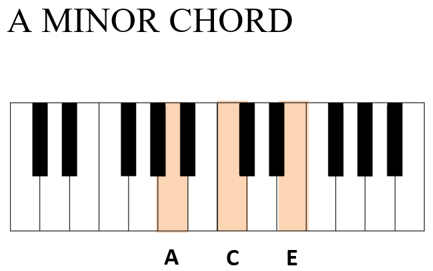
We are going to advance to forming tetrads now. First, let’s form chords with a major seventh. To form these chords, in addition to the 3 notes of the common triad (1st, 3rd, 5th) we need to add one more note: the major seventh degree. For example, in the case of C major seventh (Cmaj7), we would have the notes C, E, G, B. The major seventh degree in this case is “B”.
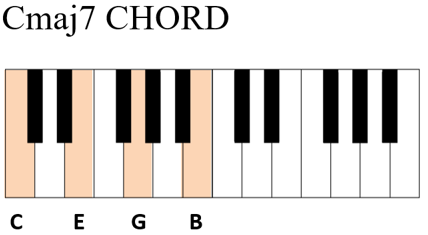
The minor seventh follows the same logic. The only difference is that the 7th degree added will be minor, that is, a semitone below the major seventh. The C major chord with minor seventh (C7, called dominant 7th) has the notes: C, E, G and Bb.
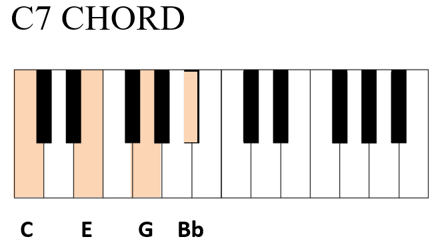
Blocked content…
Read the continuation of this article and many other full articles in the Simplifying Theory e-book.
